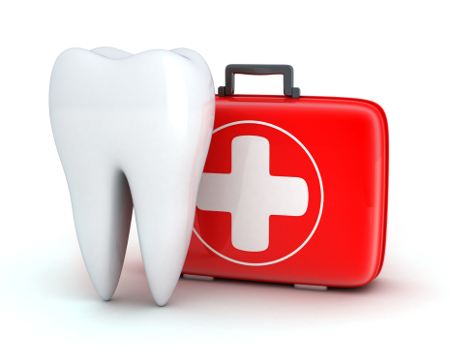Your Smile, Perfected with Precision.
Early Dental Evaluation: Preventing Chronic Oral Conditions and Ensuring Faster Healing
Severity:
Teeth Problems:
Quick visual impression
-
The posterior lower right area shows a socket-like dark area behind the last visible molar.
-
Could be a recent extraction site, an exposed/partially erupted third molar area, or food/debris packed in a deep groove.
-
I cannot tell whether there is active infection, exposed bone, or pulp involvement of an adjacent tooth without clinical exam and an X-ray.
Most likely conditions (differential diagnosis)
-
Food impaction / retained debris in a deep sulcus or extraction site — common, painful, easily treated.
-
Alveolar osteitis (dry socket) — if extraction occurred 2–5 days ago and pain is severe, radiating, and not improving. Socket may look dark and empty.
-
Pericoronitis — inflammation around a partially erupted wisdom tooth (if present).
-
Post-op healing socket — normal healing with clot present (if recent extraction).
-
Abscess / localized infection of adjacent tooth — would usually have swelling, throbbing pain, possible pus.
-
Fractured tooth/decay reaching pulp of the last molar — could cause deep pain and refer posteriorly.
Is it always better to get problems evaluated early?
Yes. Early evaluation prevents progression to chronic infections, bone involvement (osteomyelitis), tooth loss, spread to adjacent teeth, and systemic complications. Small problems are usually far easier and cheaper to treat than advanced ones.
Immediate self-care steps (right now)
-
Gently rinse with warm saline (1 tsp salt in a cup of warm water) 2–4 times daily — do not vigorously swish.
-
Avoid smoking, using straws, or forceful spitting (suction can dislodge clots and worsen dry socket).
-
Keep soft foods, avoid hard/crunchy food at that side.
-
Over-the-counter analgesics (ibuprofen 200–400 mg every 4–6 hours as needed, unless contraindicated; paracetamol/acetaminophen as alternative). Follow dosing instructions or your physician’s guidance.
-
If you see a lot of pus, increasing swelling, fever, or difficulty breathing/swallowing — seek emergency care immediately.
Clinical exam & tests the dentist will likely do
-
Visual and tactile oral exam.
-
Periapical or panoramic X-ray to assess sockets, roots, and bone.
-
Gentle irrigation of the area to remove debris.
-
Possible culture if infection suspected (rare).
Typical dental treatments depending on diagnosis
-
Debris/food impaction: professional irrigation and cleaning — often resolves quickly.
-
Dry socket (alveolar osteitis): socket debridement and placement of a medicated dressing/paste (analgesic-containing packing); repeated packing may be needed until healing begins. Pain control is central.
-
Pericoronitis: irrigation and cleaning, possible antibiotics if infection present, and sometimes operculectomy or removal of the wisdom tooth.
-
Abscess: drainage and antibiotics; root canal or extraction of the offending tooth may follow.
-
If adjacent tooth pulp is involved: root canal therapy or extraction depending on prognosis.
If healing takes 14 days — realistic timeline
-
0–3 days (immediate): pain may be severe in dry socket; swelling or bleeding may be present if recent extraction.
-
3–7 days: with proper professional treatment (socket dressing or antibiotics if infected), pain should fall substantially. Soft tissue starts to granulate.
-
7–14 days: continued improvement; socket tissue fills in. By day 14 most uncomplicated cases are markedly better or nearly resolved.
-
Beyond 14 days: if pain, draining fistula, persistent swelling, or exposed bone remains — further intervention needed (repeat cleaning, longer antibiotics, or referral to oral surgery).
If a dry socket is treated promptly, pain relief is typically observed within 24–48 hours of dressing; complete mucosal healing may take up to 2 weeks.
What can scale up if left untreated
-
Chronic infection → bone involvement (osteomyelitis).
-
Spread of infection to adjacent teeth, soft tissues, or rarely deeper neck spaces (medical emergency).
-
Persistent pain and delayed bone healing.
-
Loss of adjacent tooth if infection undermines it.
-
Systemic sepsis in severe, untreated cases (rare, but possible in immunocompromised patients).
When to seek urgent care
Go to a dentist urgently (same-day or next day) if you have:
-
Severe, worsening pain not controlled by OTC meds
-
Visible pus or increasing swelling of face/neck
-
Fever, chills, difficulty swallowing or breathing
-
Heavy or uncontrolled bleeding
Practical next steps for you
-
Book an urgent appointment with a dentist today for an exam and X-ray.
-
Bring this photo to the appointment — it helps.
-
Use the clinic directory you provided to find the nearest provider:
https://cebudentalimplants.com/map-dental-clinic -
Follow the immediate self-care above until you’re seen.
Short summary / takeaways
-
Early evaluation is strongly recommended — it prevents chronic and more serious problems.
-
The photo suggests a socket or posterior problem that needs a chairside exam and an X-ray to rule out dry socket, infection, or impacted/decayed tooth.
-
With proper treatment, significant improvement typically occurs within 48–72 hours and healing commonly completes within 1–2 weeks.
-
Don’t delay if pain/swelling/fever worsen — see a dentist or emergency care.





